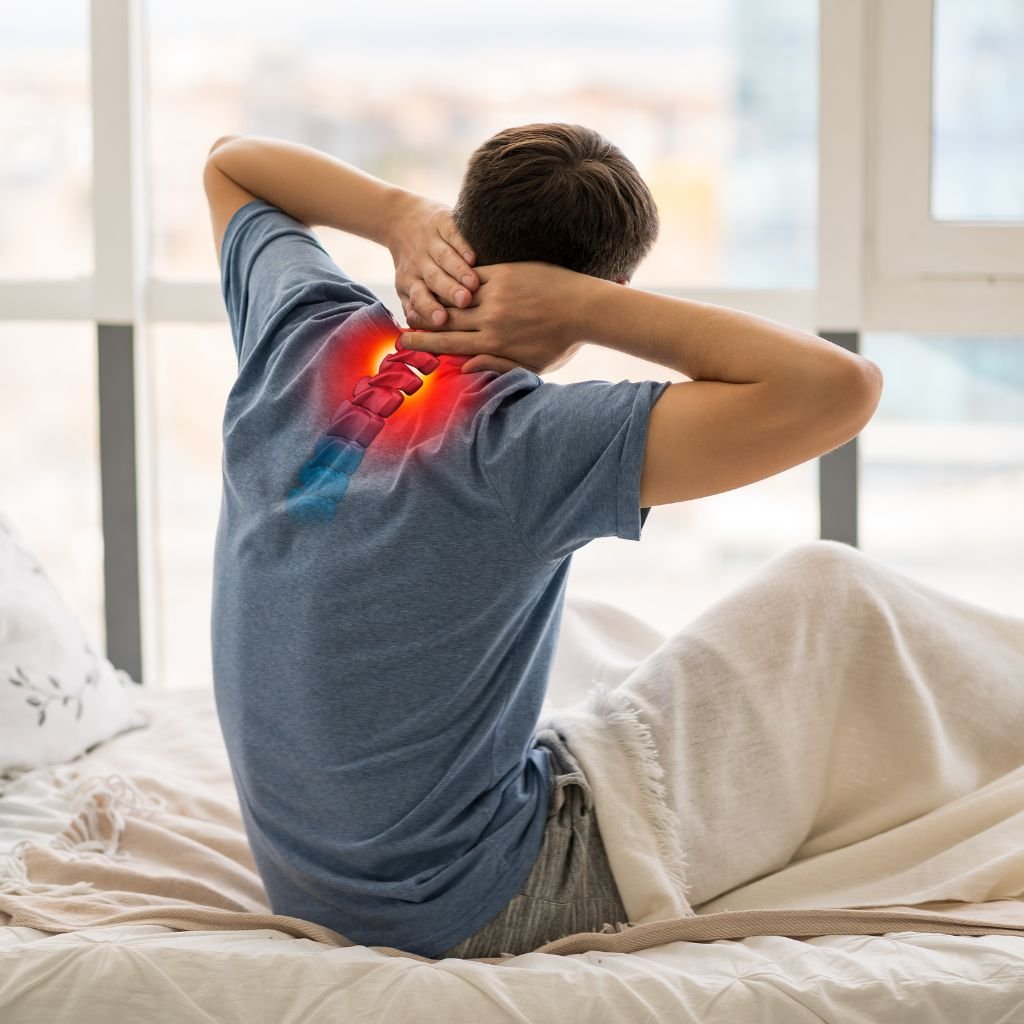
Cervical spondylosis, often called neck arthritis, is a degenerative condition affecting the cervical spine (the neck region). It develops due to age-related wear and tear of the spinal discs, joints, and bones, leading to stiffness, pain, and limited neck mobility.
While it’s a common condition—especially after age 40—it can become more serious when bone spurs or herniated discs put pressure on spinal nerves. This can result in radiating pain, muscle weakness, and even coordination problems. Chiropractic care offers natural, non-surgical relief by improving spinal function and reducing nerve irritation.
Cervical spondylosis typically results from long-term spinal stress and disc degeneration. Common causes include:
Disc Degeneration: With age, spinal discs lose moisture and shrink, reducing cushioning between vertebrae.
Bone Spurs (Osteophytes): The body creates extra bone in response to disc wear, which can press on nerves.
Poor Posture: Long-term poor posture—especially from screen use—adds stress to the cervical spine.
Previous Injuries: Past neck trauma or whiplash injuries can accelerate degeneration.
Sedentary Lifestyle: Lack of movement weakens the muscles that support spinal alignment.
Occupational Strain: Jobs that involve prolonged sitting or repetitive neck movements contribute to spondylosis.
Cervical spondylosis symptoms vary depending on the severity and nerve involvement. Common signs include:
Neck pain and stiffness, especially in the morning or after inactivity
Headaches originating from the base of the skull
Grinding or popping sensation when turning the neck
Pain that radiates into the shoulders or arms
Numbness or tingling in the arms or hands
Muscle weakness or difficulty with fine motor tasks
Loss of balance or coordination (in more severe cases)
If nerve compression progresses, it can lead to cervical radiculopathy or even spinal cord compression, requiring immediate attention.
Our chiropractic approach focuses on relieving pressure, restoring motion, and preventing further degeneration. We use gentle, personalized techniques to help reduce symptoms and improve spinal health.
We begin with a full consultation to understand your history, daily habits, and symptom patterns.
A physical exam and imaging (if needed) help identify disc degeneration, joint restriction, or nerve impingement.
Targeted spinal adjustments restore mobility and alignment in the cervical spine.
This helps relieve nerve pressure, improve joint function, and reduce stiffness or pain.
We address muscle tightness using massage, trigger point therapy, and myofascial release.
This helps relax overworked muscles and promotes better neck movement.
We teach posture correction techniques for daily activities like sitting, driving, or using devices.
Proper ergonomics reduces daily stress on the cervical spine.
Customized exercises are prescribed to improve neck flexibility and muscle support.
This enhances long-term spinal stability and reduces risk of recurrence.
We offer recommendations on anti-inflammatory diets, hydration, and supplementation to support joint health.
Proper rest, movement, and stress management are emphasized for full recovery.
Patients often report noticeable relief after just a few sessions—less stiffness, better neck rotation, and reduced radiating pain. Over time, they experience fewer flare-ups, better posture, and a return to daily activities with confidence. Chiropractic care empowers the body to heal naturally and slows the progression of cervical spine degeneration.
Cervical spondylosis may be a natural part of aging, but living in pain doesn’t have to be. Chiropractic care offers an effective, gentle path to relief and long-term spine health. Whether you’re in the early stages or dealing with chronic neck discomfort, we’re here to help you regain mobility, reduce pain, and improve your quality of life.
If neck pain or stiffness is affecting your day, don’t wait—contact us today to schedule your consultation.
No. We use gentle, controlled techniques tailored to your condition. Most patients feel relief and greater comfort, not pain, after treatment.
Treatment plans vary depending on severity. Some feel improvement in a few visits; others require several weeks for long-term stability and relief.
Avoid prolonged looking down at phones, heavy lifting without neck support, and poor posture. We guide you on safe movement and daily habits.
In many cases, yes. X-rays or scans help us understand the degree of spinal degeneration or misalignment, so we can plan your chiropractic care safely and effectively.
We also require basic blood tests such as Vitamin B12 (for nerve health), Vitamin D3 (for bone health), and HbA1c (to check sugar levels) especially if you have fatigue, slow healing, or other systemic concerns. These tests help ensure your body is in the best state to respond to natural healing.